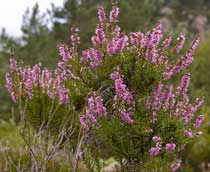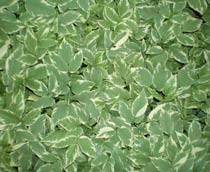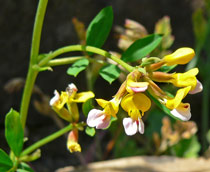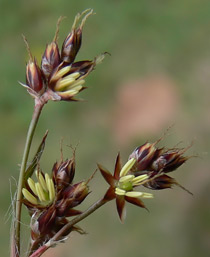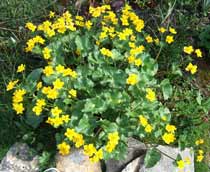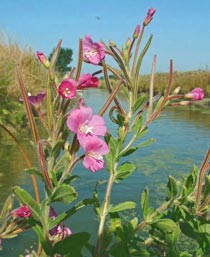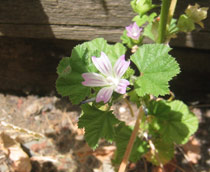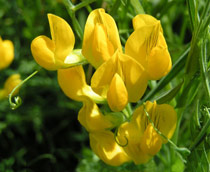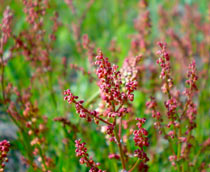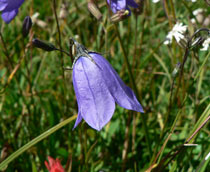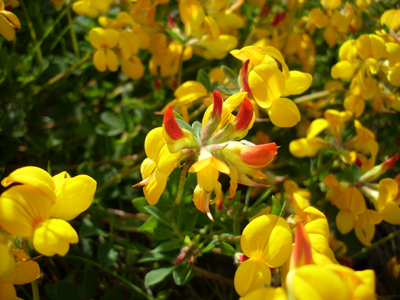
This is one of the most common members of the pea family.
Plants - Wildflowers 3
If all the hundreds or thousands of seeds or fruits produced by a plant fell directly underneath it and began to germinate, what would be the consequences? The soil would not be able to feed even a small proportion of the germinating seeds. Nature, however, has prevented such a situation via the shape/lightness of the seed, insects and of course the wind.
Don't forget to click on the photos to appreciate the full beauty of the flowers!
1.
Can you identify this wildflower?
Cornflower
Kingcup
Spurge
Heather
- Order: Ericales
- Family: Ericaceae
- Genus: Calluna
- Species: C. vulgaris
- Grows in pine and oak forests on acid soils, in old peat bogs and on moorlands.
- Its roots live in association with certain species of fungi, without which it is unable to function.
2.
Can you identify this wildflower?
Water Forget-me-not
Ground Elder
Lady's Smock
Mouse-ear Hawkweed
- Order: Apiales
- Family: Apiaceae
- Genus: Aegopodium
- Species: A. podagraria
- Its odour attracts insects, especially bees.
- Fresh, young leaves can be used in salads or cooked like spinach.
- A form with variegated leaves is occasionally deliberately grown in gardens.
3.
Can you identify this wildflower?
Great Hairy Willow-herb
Meadow Vetchling
Birdsfoot-trefoil
Wood Anemone
- Order: Fabales
- Family: Fabaceae
- Genus: Lotus
- One of the most common members of the pea family.
- A profusely blooming double-flowered form is sometimes cultivated in gardens.
- A good fodder plant both for cutting and grazing.
4.
Can you identify this wildflower?
Sweep's Brush
Harebell
St John's wort
Ragged Robin
- Order: Poales
- Family: Juncaceae
- Genus: Luzula
- Species: L. campestris
- Also known as Field Woodrush.
- It is a member of the Rush family.
- It flowers on grassy, lowland slopes and mountain sides in early Spring.
5.
Can you identify this wildflower?
Kingcup
Toadflax
Wild Mustard
Cowslip
- Order: Ranunculales
- Family: Ranunculaceae
- Genus: Caltha
- Species: C. palustris
- A moist-loving plant which can be seen in spring and autumn, given favourable weather conditions.
- Its juice has a sharp taste and is avoided by cattle.
- In olden days, unopened flower-buds preserved in vinegar were a replacement of capers.
6.
Can you identify this wildflower?
Toadflax
Ox-eye Daisy
Great Hairy Willow-herb
Wood Anemone
- Order: Myrtales
- Family: Onagraceae
- Genus: Epilobium
- Species: E. hirsutum
- Often forms colonies along banks of rivers, streams, canals and ponds.
- Prefers calcareous soils and its flowers produce a large quantity of nectar.
- In Ancient Greece, its roots were said to have the power to tame any wild animal.
7.
Can you identify this wildflower?
Dwarf Mallow
Bladder Campion
Shepherd's Purse
Spurge
- Order: Malvales
- Family: Malvaceae
- Genus: Malva
- Species: M. neglecta
- The fruits of this plant are colloquially known as 'cheeses'.
- A useful herb, it contains a substance said to heal inflammations of the stomach and intestine.
- It particularly likes soils rich in nitrogen.
8.
Can you identify this wildflower?
Yarrow
Field Bindweed
Birdsfoot-trefoil
Meadow Vetchling
- Order: Fabales
- Family: Fabaceae
- Genus: Lathyrus
- Species: L. pratensis
- The stems of this plant can grow up to 120 cms, provided they have a firm support to which they can cling with their tendrils.
- Infusions made from stems and leaves can sooth coughs and chronic bronchitis.
9.
Can you identify this wildflower?
Sheep's Sorrel
Coltsfoot
Scarlet Pimpernel
Aaron's Rod
- Order: Caryophyllales
- Family: Polygonaceae
- Genus: Rumex
- Species: R. acetosella
- This plant is a good indicator of poor, sandy, acid soils.
- It needs plenty of light to thrive well.
- Has an extensive root system that forms numerous buds, giving rise to new plants.
10.
Can you identify this wildflower?
Heather
Germander Speedwell
Harebell
Cornflower
- Order: Asterales
- Family: Campanulaceae
- Genus: Campanula
- Species: C. rotundifolia
- Grows most often on rocks, in pastures and at the edges of forests.
- Is occasionally found with white flowers.
- A strong wind can flick the seeds several metres away from the mother plant.
**Unlimited Quizzes Await You! 🚀**
Hey there, quiz champ! 🌟 You've already tackled today's free questions.
Ready for more?
Ready for more?
🔓 Unlock UNLIMITED Quizzes and challenge yourself every day. But that's
not all...
not all...
🔥 As a Subscriber you can join our thrilling "Daily Streak" against other
quizzers. Try to win a coveted spot on our Hall of Fame Page.
quizzers. Try to win a coveted spot on our Hall of Fame Page.
Don't miss out! Join us now and keep the fun rolling. 🎉
**Unlimited Quizzes Await You! 🚀**
Hey there, quiz champ! 🌟 You've already tackled today's free questions. Ready for more?
🔓 Unlock UNLIMITED Quizzes and challenge yourself every day. But that's not all...
🔥 As a Subscriber you can join our thrilling "Daily Streak" against other quizzers. Try to win a coveted spot on our Hall of Fame Page.
Don't miss out! Join us now and keep the fun rolling. 🎉





